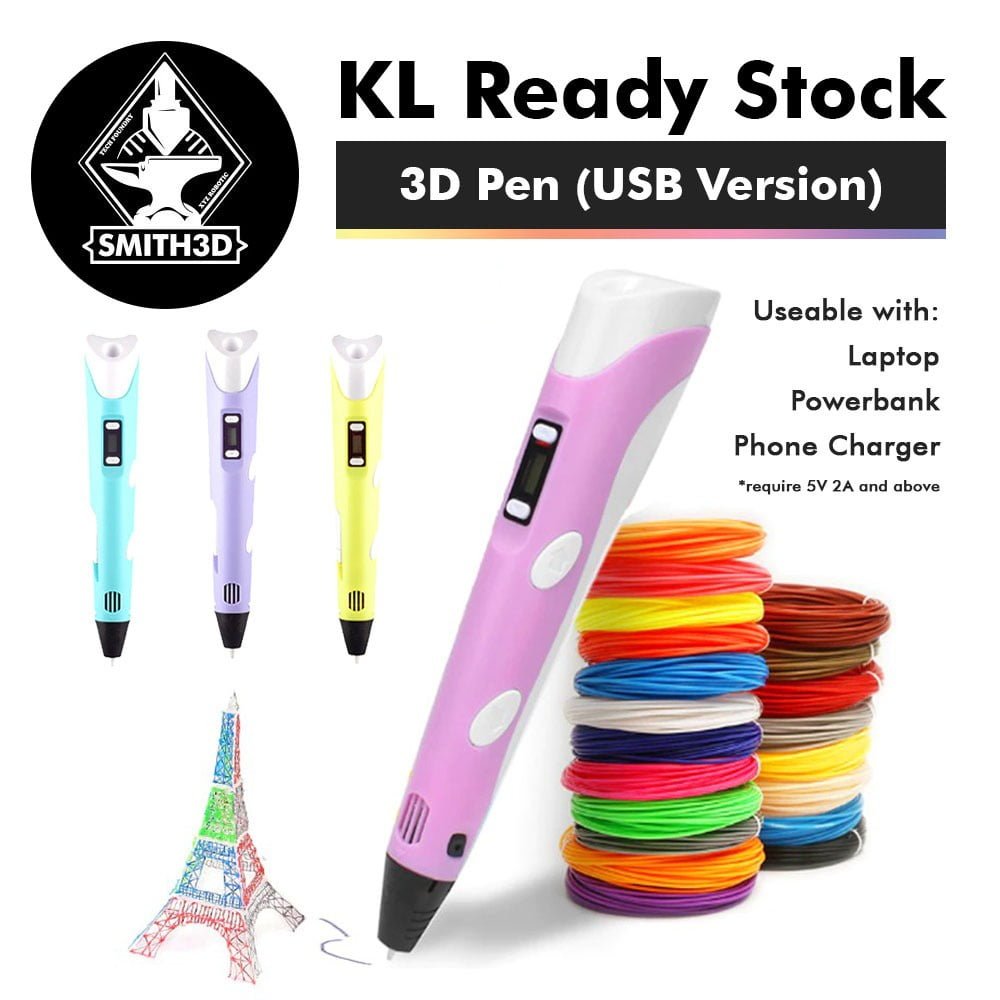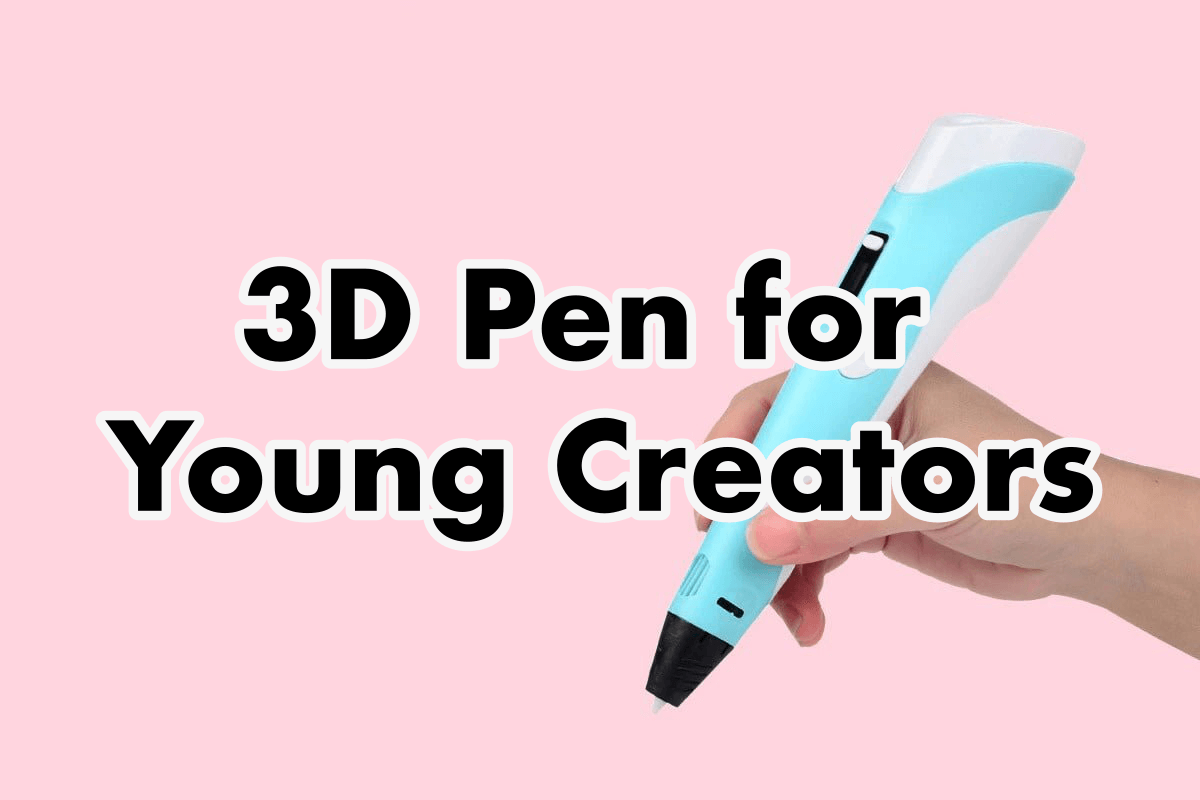More Guides
Why a 3D Pen is the Perfect Starter Tool for Young Creators
Introduction
In an era where technology seamlessly intertwines with creativity, fostering innovative skills in children and students is paramount. Traditional art tools like crayons and markers have long been staples in classrooms and homes, but the advent of 3D pens has revolutionized the way young minds can express their creativity. Unlike 3D printers, which often require complex software and technical know-how, a 3D pen offers an intuitive and hands-on approach to creating three-dimensional masterpieces.
As a versatile tool that bridges the gap between imagination and tangible creation, the 3D pen is swiftly becoming the preferred choice for parents, educators, and young artists alike. This blog post
explores why a 3D pen is the perfect starter tool for young creators, highlighting its ease of use, safety features, creative potential, and educational benefits.
Simplicity Over Complexity
One of the most compelling reasons to choose a 3D pen as a beginner tool is its remarkable simplicity. Unlike 3D printers, which necessitate a thorough understanding of 3D modeling software and intricate setup processes, a 3D pen allows users to start creating immediately. The straightforward design and user-friendly interface mean that children and students can focus on their creativity without being overwhelmed by technical details.
Key Features Enhancing Simplicity
• LCD Screen and Intuitive Controls: The 3D pen is equipped with an LCD screen that displays essential information such as temperature and mode settings. This feature makes it easy for users to adjust the pen according to their project needs without navigating through complicated menus.
• Heating Mechanism: The pen operates by heating plastic filament and pushing it through the nozzle, similar to a hot glue gun. This direct method of creation allows for immediate feedback and adjustments, fostering a more engaging creative process.
• No Software Required: Unlike 3D printers, which often require users to design models using specialized software, the 3D pen eliminates this barrier. Young creators can draw directly in three dimensions, translating their ideas into physical objects in real-time.
This ease of use makes the 3D pen an ideal introduction to the world of 3D art, enabling kids and students to explore their creativity without the initial steep learning curve associated with more advanced tools.
Safety Features Tailored for Young Users
When introducing new tools to children, safety is always a top priority. The 3D pen is designed with several safety features that make it suitable for young users, ensuring that their creative journey is both enjoyable and secure.
Safety Aspects of the 3D Pen
• Cool-Touch Body: While the nozzle of the pen reaches high temperatures to melt the filament, the body of the pen remains cool to the touch. This design minimizes the risk of accidental burns, allowing kids to handle the pen safely during use.
• Material Choices: The 3D pen supports various filament types, each with its own safety profile. For instance, PLA (Polylactic Acid) is biodegradable and completely safe for use in enclosed environments, making it an excellent choice for indoor projects. ABS (Acrylonitrile Butadiene Styrene), while stronger, may emit mild odors and is less suitable for indoor use and younger children. PCL (Polycaprolactone) has a lower melting point, making it safer and more suitable for kids, although it comes at a higher price point.
• Ventilation Considerations: While PLA is safe and eco-friendly, ABS can produce some smoke and odor. It’s recommended to use PLA filament for most projects, especially in enclosed spaces like classrooms or homes, to ensure a healthy environment for young users.
• Supervised Use: Although the 3D pen is designed with safety in mind, it’s essential for parents and educators to supervise young children during use. This supervision ensures that kids handle the pen correctly and safely, further minimizing any potential risks.
These safety features make the 3D pen a reliable and secure tool for young creators, allowing them to explore 3D pen art and 3D pen for drawing with peace of mind.
Creative Possibilities for Kids
The 3D pen unlocks a myriad of creative possibilities, transforming simple ideas into three-dimensional realities. This tool not only sparks imagination but also enhances fine motor skills and spatial understanding, essential components of a child’s development.
Creative Projects Made Easy
• Personalized Keychains: Kids can create custom keychains by designing their names or favorite shapes. This project is simple yet satisfying, providing a tangible reward for their creativity.
• Miniature Sculptures: From animals to fantastical creatures, the 3D pen allows young artists to sculpt detailed figures. These projects help develop patience and attention to detail.
• Decorative Bookmarks: Combining functionality with creativity, kids can design unique bookmarks that reflect their personalities and interests.
• Simple Jewelry Pieces: Crafting bracelets and pendants with the 3D pen introduces children to the basics of jewelry design, encouraging them to experiment with colors and shapes.
• Educational Models: Building geometric shapes or simple models of molecules and cells can make learning fun and interactive, reinforcing concepts taught in school.
• Layered Drawings: One of the most exciting aspects of the 3D pen is the ability to layer drawings. Kids can create multi-colored, three-dimensional art pieces by layering different colors and shapes, enhancing their understanding of depth and structure.
These projects not only provide hours of creative fun but also instill a sense of accomplishment and pride in young creators. The versatility of the 3D pen ensures that there is always a new 3D pen idea to explore, keeping creativity fresh and engaging.
To further inspire young creators, watch the following YouTube tutorial that guides beginners through five exciting projects.
Educational Benefits
Beyond the realm of art and craft, the 3D pen offers significant educational benefits, making it a valuable tool in both home and classroom settings. By integrating the 3D pen into learning activities, educators can enhance various aspects of a child’s education.
STEM Learning Enhancement
• Science and Math Integration: Creating three-dimensional models helps students visualize complex scientific and mathematical concepts. For example, building models of the solar system or geometric shapes can make abstract ideas more concrete and understandable.
• Problem-Solving Skills: Designing and constructing with the 3D pen encourages critical thinking and problem-solving. Kids learn to plan their projects, anticipate challenges, and find creative solutions.
• Spatial Awareness: Working with a 3D pen improves spatial awareness as children manipulate objects in three dimensions. This skill is crucial not only in art but also in fields like engineering and architecture.
Artistic Development
• Creativity and Expression: The 3D pen provides a unique medium for artistic expression, allowing kids to experiment with form, color, and texture in ways that traditional tools cannot offer.
• Fine Motor Skills: Handling the 3D pen requires precise movements, which helps in developing fine motor skills. This dexterity is beneficial for other tasks, including writing and other forms of manual work.
Interactive Learning
• Collaborative Projects: The 3D pen can be used in group projects, fostering teamwork and collaboration. Kids can work together to create larger structures or themed art pieces, enhancing their social and cooperative skills.
• Interactive Lessons: Teachers can incorporate 3D pen activities into lessons, making learning more interactive and engaging. This hands-on approach can increase student interest and retention of information.
By integrating the 3D pen into educational settings, schools can provide a more dynamic and interactive learning environment. This tool not only makes learning fun but also equips students with valuable skills that extend beyond the classroom.
Transitioning to Advanced Tools
While the 3D pen is an exceptional tool for beginners, particularly for kids and students, it also serves as a stepping stone to more advanced technologies like 3D printers. Understanding how to transition from a 3D pen to a 3D printer can help young creators continue their journey of innovation and creativity.
Building Foundational Skills
• Design Thinking: Using a 3D pen encourages design thinking, as children learn to conceptualize and execute their ideas in three dimensions. This foundational skill is directly applicable to 3D printing, where precise design is crucial.
• Technical Proficiency: Handling a 3D pen teaches kids about the basics of 3D modeling, such as understanding dimensions, scale, and proportion. These concepts are essential when moving to 3D printing, where designs are often created using specialized software.
Confidence and Competence
• Skill Development: Mastering the 3D pen builds confidence and competence in young creators. This sense of achievement motivates them to tackle more complex projects and explore advanced tools like 3D printers.
• Creative Confidence: The immediate feedback provided by the 3D pen helps kids see the results of their creativity instantly. This reinforces their creative confidence, making them more likely to experiment and take risks in their designs.
When to Upgrade to a 3D Printer
• Complex Projects: As kids become more adept with the 3D pen, they may seek to create more intricate and detailed models. 3D printers offer the precision and capability needed for such projects.
• Educational Advancement: For students involved in more advanced STEM programs, 3D printers for education can provide the necessary tools to create detailed prototypes and models that the 3D pen cannot achieve.
• Creative Expansion: 3D printers allow for a broader range of materials and finer details, expanding the creative possibilities beyond what is possible with a 3D pen.
Transitioning to a 3D printer after gaining proficiency with a 3D pen ensures a smooth and logical progression in a young creator’s journey. It builds on the skills and confidence developed through the 3D pen, enabling even greater creative achievements.
Conclusion
Investing in a 3D pen is an excellent way to nurture the creative talents of young minds. Its simplicity, combined with its ability to transform imagination into reality, makes it an ideal starter tool for kids and students. The 3D pen not only fosters creativity and fine motor skills but also enhances educational experiences by integrating seamlessly into STEM learning and artistic development.
By choosing the 3D pen, parents and educators can provide a safe, engaging, and versatile tool that opens up endless possibilities for 3D pen art and 3D pen for drawing. As young creators develop their skills and confidence, the 3D pen serves as a solid foundation for future advancements, such as transitioning to 3D printers for more complex and detailed projects.
Encourage the next generation of innovators and artists to unleash their creativity with a 3D pen from Smith3D. Whether it’s for educational purposes, artistic expression, or simply fun and engaging projects, the 3D pen is the perfect tool to inspire and cultivate the creative talents of young minds.
Ready to spark your child’s creativity? Shop the 3D pen at Smith3D now and start their journey into the exciting world of 3D art today!

3D Pen for Arts & Craft / Doodling
Key Features of 3D Pen for Arts & Craft / Doodling
3D Pen is a perfect gift for kids, helps them to inspire creativity, design, planning, building, and spatial understanding. It has an LCD screen and works by heating up the plastic filament and pushing it through the nozzle at the end of the pen, similar to a hot glue gun.
The tip gets very hot but the body …

